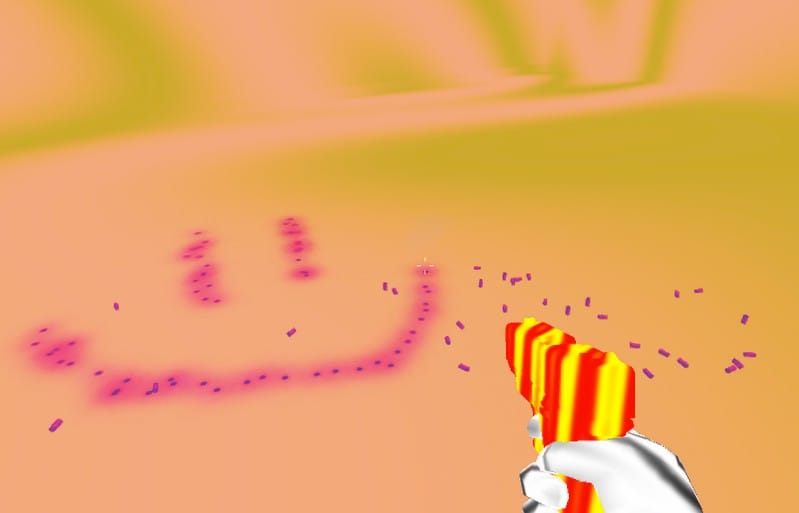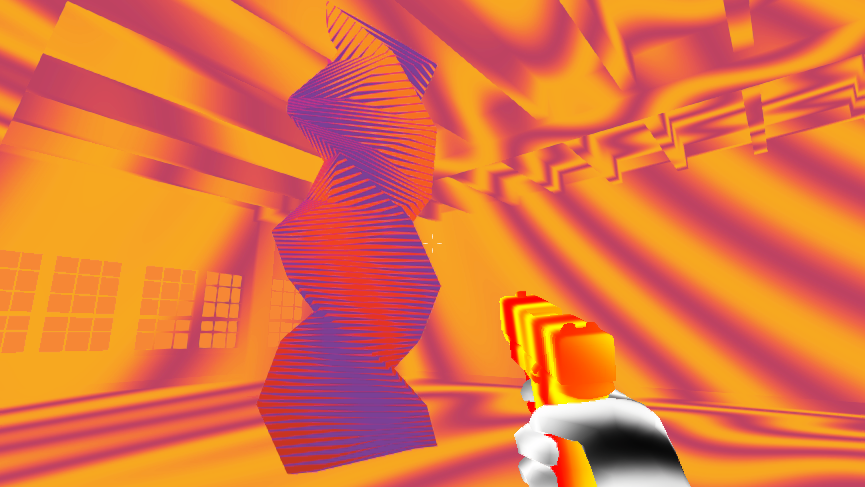Artpartment, in which you murder pop art, but pop art wins anyway

“Pop art is for everyone.” — Andy Warhold
As a movement reacting to the elitist prerequisites of fine art, pop art’s ideal could probably best be summed up as the desire to make your viewer go, “Oh. So I guess soup is high-brow now?” Suddenly the gouche and propoganda-like images of American advertisement transformed into gallery-worthy pieces. Through the simple slight of hand of a cheeky artist, pop art demonstrated how nothing should be more relevant to fine art than the visual messages that manage to reach mass-culture.
The success of the movement and its staying power as an important historical moment should in and of itself serve as definitive proof that mass culture and art are not mutually exclusive. But now that the art community appears to have somewhat accepted the idea, a funny reversal is happening. The mass-produced cultures—like the one surrounding big-budget videogames—seem to flatly reject fine art’s outstretched hand.

Artpartment, the self-described “pop art videogame,” reads as a subversion of this senseless back and forth between high and low culture. As an entry to 7dfps, a seven day game jam centered around the idea of breathing new life into the FPS, Artpartment provides players with all the typical shooter necessities. There’s a crouch, a jump, a fast walk, and—of course—a gun. Boy is there ever a gun. One painted an oscillating red-yellow color that spits out purple bullets.
Despite all the capabilities the game allows you, you don’t really need anything but your trusty, hallucinogenic pistol. Satirizing the criticism that, in FPSes, shooting things is the only form of interaction permitted, the gun in Artpartment is literally your only vehicle for interacting with the game world. After entering an elevator, you are given the choice to shoot different colored panels on a wall, which brings you to their respective optical illusion room. The sound of the gun fire is abrasively loud and lifelike—out of character in the otherwise surreal environments.
An object stands at the center of each room, mimicking the experience of entering an art gallery. Seeing as the appearance of at least one oversized common household object is a prerequisite of pop art, the first room I entered contained an enormous BIC lighter. In my defense, I circled that lighter for a good five seconds trying to figure it out, plucking away at my keyboard to see if it’d do anything other than just stand there. It did not, so naturally I shot it until it did something. And after imploding into Minecraft-esque planks of wood, the game didn’t even give me time to consider collecting the wood before it all immediately disappeared. I took this as proof that gallery art is just as useless to me intact as it is destroyed.
I spent the majority of my time murdering pop art.
After taking too much pleasure in shooting an emblem of pop art into obliteration, I went back into the elevator to explore more kaleidoscope rooms. Midway through, I came across a particularly mind-bending sculpture that gave me pause. Walking under it, noting the hypnotic contrast between my swirling gun and the swirling sculpture, I found myself pondering why the innocent pleasures of life can’t ever compare to the mindless joy of destroying things. With a sigh, I shot the sculpture to hell, and returned to my frenzied killing spree.
Although I spent the majority of my time murdering pop art in Artpartment, pop art managed to have the last laugh in the end. Because apart from the oversized BIC lighter and the final stage before the game ends, there’s really hardly any overt use of “pop art” imagery in this pop art videogame. The use of the term is, I think, instead meant to speak to the more recent battle in games between its supposedly “low” and “high” brow uses.

Artpartment neither supports nor rejects the bleeding of art into videogames, despite being a pop art videogame. Instead, as a true product of the pop art mentality, Artpartment reveals how the hierarchy of culture—this battle between low and high brow—is pretty senseless. You can jam art down the throat of an FPS, and it will still be fun. You can have a simple shooting game where literally all you can do is shoot shit, and it can still be appropriately labeled art. However you categorize it, videogames are for everyone. Like pop art, videogames transcend cultural divisions.
You can play Artpartment for free on your browser, and follow the game’s creator, Cale Bradbury, on twitter and through his website.



